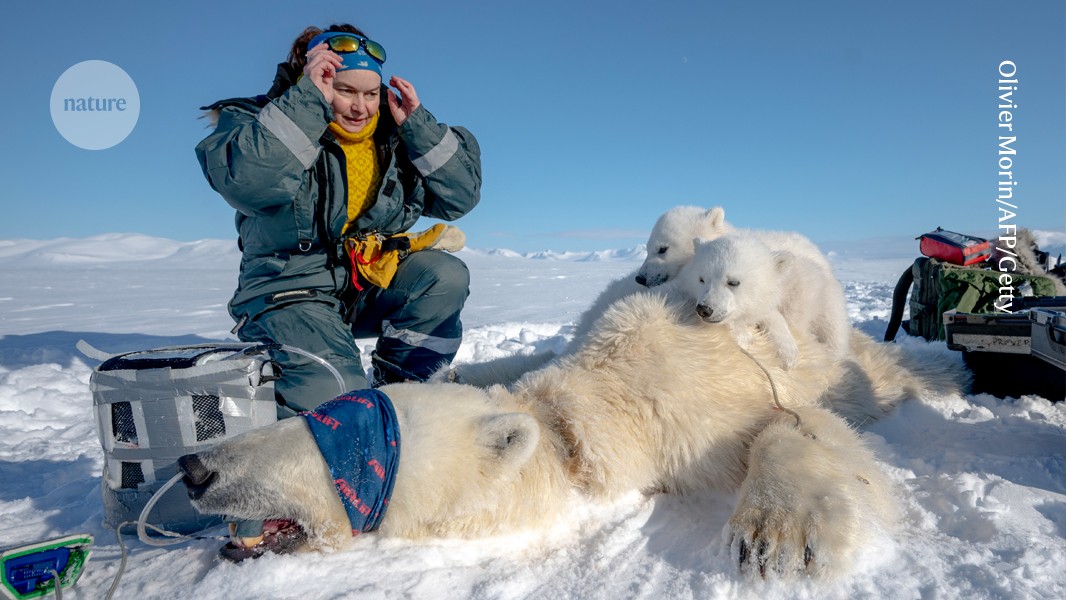The polar regions hold crucial scientific secrets — and the time to study them is running out

The poles hold 70% of Earth’s fresh water and are crucial to science; what’s unfolding there as the planet warms deserves greater attention
Ends of the Earth: Journeys to the Polar Regions in Search of Life, the Cosmos, and Our Future Neil Shubin Dutton (2025)
On his first fossil-hunting expedition to the Arctic regions of Greenland in 1988, evolutionary biologist and science writer Neil Shubin felt utterly disoriented. It was daylight around the clock, with the sun sweeping a great ellipse across the sky. Life’s rhythm was determined not by light, but by sound; glacially fed rivers roared at midday but, by 3 a.m., had faded to quiet trickles.
As the Arctic and Antarctica grow warmer, the fragile window available to us for understanding these icy outposts and the planetary processes they control is rapidly closing, writes Shubin in Ends of the Earth, an ambitious and far-reaching introduction to the polar regions. He explores polar science through the work of leading researchers and examines broader issues, such as how melting ice is beginning to expose microorganisms previously unknown to science.
He weaves his own story, and those of his collaborators, into a broader narrative that touches on geopolitical issues and the lives of pioneering explorers. The book is packed with information, such as the fact that the polar ice caps have existed for only about 10% of Earth’s history. The origin and evolution of Homo sapiens, and the species’ migration out of Africa, occurred at a moment when Earth’s physical geography — its coastlines, islands and ocean levels — was defined by “the amount of water locked in polar ice”, Shubin writes.
And that is the book’s key insight. The polar regions drive global climate, environmental dynamics and even human evolution — and have done so for millions of years. This helps to explain why the poles are so crucial to policy debates about climate change. The permafrost holds 1,500 billion tonnes of carbon — about twice the amount in the atmosphere.
A second point highlighted by the author is the unique value of the polar regions for scientific discovery, owing to their extreme and unusual physical conditions. For example, Antarctica’s dry, stable air and vast ice sheets make it one of the best places on Earth to collect interstellar dust, which settles and is preserved in the snow.
Layers of history
The layered structure of polar ice acts as a natural archive of Earth’s climate history, allowing scientists to reconstruct past temperatures. And the polar regions host extraordinary forms of life. Ecosystems in Antarctic subglacial lakes — buried some 3 kilometres beneath the ice — might have evolved in complete isolation for millions of years, and some microbes in the pitch-dark conditions can metabolize minerals to survive. Research into these habitats can offer rare insights into life in extreme environments, Shubin writes.
However, by focusing so much on ice sheets, the author unintentionally reinforces the idea that the polar regions are defined by glacial ice. This might apply to Antarctica, a whole continent covered by ice, but is not true of the Arctic, whose landscapes include tundra and, by most reckonings, forests. Much of that region remained unglaciated even in the last ice age.

The Imperial Trans-Antarctic Expedition (1914–17), led by Ernest Shackleton, aimed to make the first land crossing of Antarctica.Credit: Smith Archive/Alamy
Shubin notes how a definition of the Arctic is elusive. It has been framed over the centuries by various markers, including the northern tree line, the Arctic Circle and political or cultural boundaries. Yet, in the book, the Arctic is widely portrayed mainly as Greenland and the heavily glaciated high Arctic archipelagos — regions that most resemble Antarctica.
Enjoying our latest content?
Login or create an account to continue
- Access the most recent journalism from Nature's award-winning team
- Explore the latest features & opinion covering groundbreaking research
or
Sign in or create an accountNature 642, 29-30 (2025)
doi: https://doi.org/10.1038/d41586-025-01683-y
This story originally appeared on: Nature - Author:Marc Macias-Fauria














